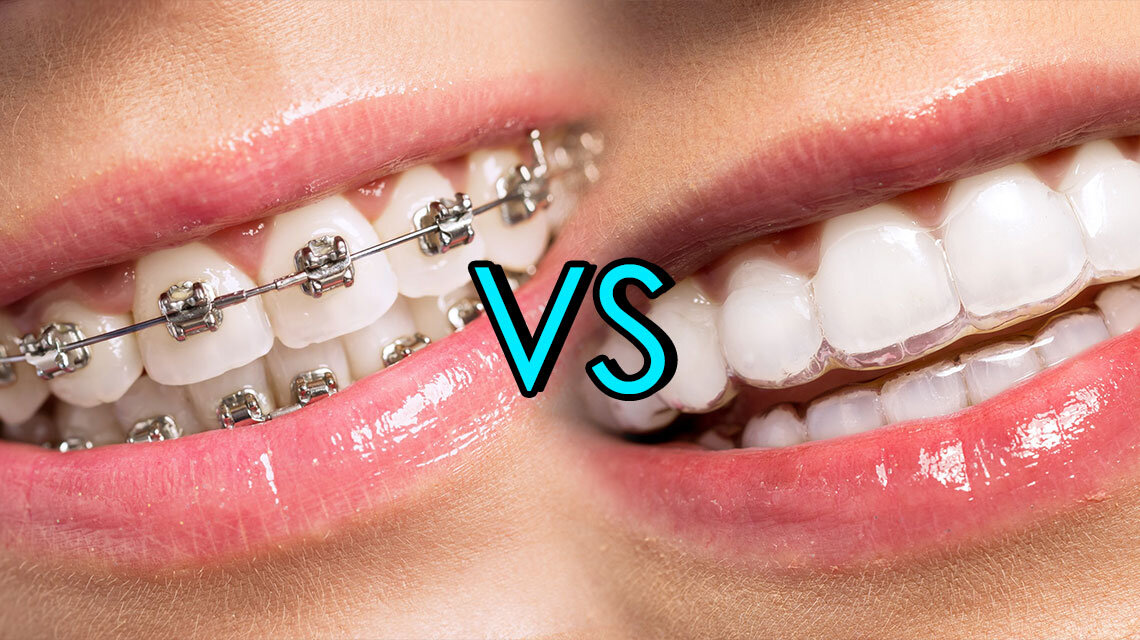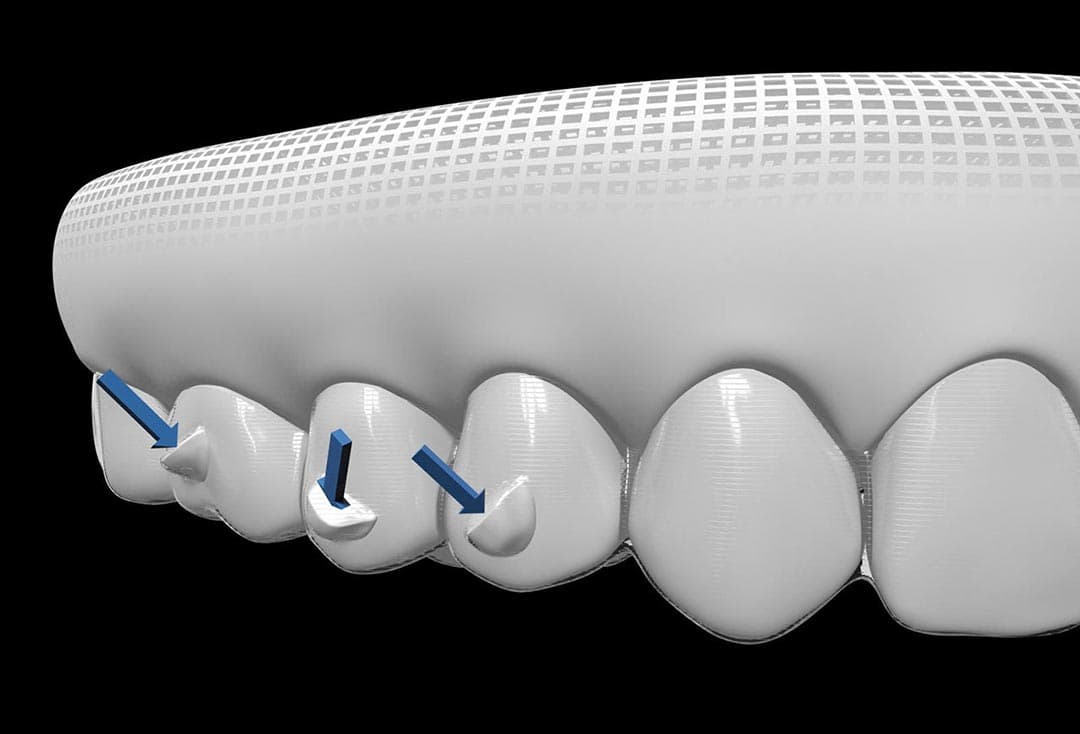Invisalign vs. Traditional Dental braces: Which Alternative Is Right for You?
When taking into consideration orthodontic treatment, the option between Invisalign and conventional braces offers numerous important aspects that merit careful evaluation. Invisalign uses a very discreet alternative with detachable aligners, while conventional dental braces supply a much more visible yet effective solution for severe imbalance. Each alternative incorporates distinct benefits and downsides connected to aesthetic appeals, convenience, therapy duration, and cost. Comprehending these subtleties is important for making a notified choice that straightens with your personal preferences and way of living. The concern remains: which choice will best meet your orthodontic requirements and assumptions?
Review of Therapy Choices

In comparison, conventional dental braces are composed of metal braces and cords that are adhered to the teeth. This method applies constant stress in time to attain placement. While efficient for complicated orthodontic issues, traditional dental braces need normal check outs for modifications and can present challenges in maintaining dental hygiene because of the difficulty of cleansing around braces and cords.
Both alternatives have their qualities, and the choice commonly pivots on details oral conditions, lifestyle choices, and client compliance. Eventually, consulting an orthodontic specialist is vital for figuring out one of the most ideal therapy strategy tailored to specific requirements. Comprehending the nuances of each alternative can substantially influence the general success of orthodontic treatment.
Aesthetic Factors To Consider
A substantial aspect affecting the selection in between Invisalign and typical dental braces is the aesthetic appeal each therapy offers. Invisalign aligners are crafted from clear plastic, making them essentially invisible when put on. This discreet look is particularly attracting adults and young adults who may feel self-conscious concerning their orthodontic treatment. The ability to maintain an all-natural smile throughout the alignment procedure can considerably improve the patient's self-confidence in social and expert setups.
On the other hand, conventional braces contain metal brackets and cables, which can be extra visible. While advancements in orthodontic modern technology have resulted in the development of smaller braces and tinted elastics, traditional braces still maintain an even more obvious profile. For some individuals, the visibility of dental braces might discourage them from looking for needed therapy.
Inevitably, the option in between Invisalign and traditional braces might rest on individual preferences concerning appearances. People who prioritize discretion commonly lean towards Invisalign, while those that are less concerned concerning presence may decide for typical braces. Recognizing the aesthetic effects of each choice is essential for making a notified choice that lines up with one's way of life and choices.
Convenience and Convenience

In regards to comfort, Invisalign aligners are detachable, enabling individuals to appreciate their favored foods without restriction and keep ideal dental health. Brushing and flossing are streamlined, as the aligners can be obtained throughout these routines, whereas traditional braces need mindful navigating around cords and braces.
Furthermore, Invisalign's modern system permits fewer orthodontic sees. People generally receive multiple collections of aligners at as soon as, which can streamline the therapy process and reduce time spent in the orthodontist's chair. In contrast, conventional dental braces demand regular modifications, making them much less hassle-free for those you can try these out with hectic timetables. Invisalign. Generally, the comfort and benefit of Invisalign make it an attractive choice for several people looking for orthodontic treatment.
Therapy Duration and Effectiveness
While both Invisalign and typical braces work in dealing with oral misalignments, the duration of therapy can vary significantly between the 2 alternatives. Normally, Invisalign therapy can take anywhere from 12 to 18 months, depending upon the complexity of the situation. The clear aligners work by slowly changing teeth into their desired positions, and normal follow-ups with an orthodontist help make sure development remains on track.
On the other hand, conventional dental braces usually require a longer dedication, normally varying from 18 months to 3 years. This is because of their set nature and using cables and braces, which can be more reliable for complicated cases and serious misalignments (Invisalign). The treatment performance of conventional dental braces is well-documented, as they enable accurate modifications and higher control over tooth movement
Ultimately, the option in between Invisalign and typical dental braces might rest on both the expected treatment period and the details dental problems available. Consulting with an orthodontist is important, as they can offer customized suggestions based on specific needs, guaranteeing the selected method straightens with wanted end results and timeframes.
Cost Contrast and Insurance Coverage Alternatives
Expense plays a considerable role in the decision-making procedure for people taking into consideration orthodontic therapy, whether choosing Invisalign or conventional dental braces. Usually, the expense of Invisalign varieties from $3,000 to $8,000, while typical dental braces normally set you back between $2,000 and $6,000. Aspects influencing these costs consist of the intricacy of the instance, the duration of therapy, and geographical place.
Many dental insurance coverage plans provide partial coverage for orthodontic treatments, yet the specifics can vary commonly. Generally, traditional dental braces might be a lot more regularly covered by see insurance strategies compared to Invisalign, which some insurance providers categorize as an aesthetic procedure.
Additionally, several orthodontic methods offer flexible payment plans, making both therapy options much more accessible. Clients ought to ask about prospective funding alternatives and discounts for upfront settlements. Evaluating the overall expense, consisting of insurance benefits and layaway plan, is necessary for making an informed choice that straightens with both visual choices and budget factors to consider.

Final Thought
In summary, the choice in between Invisalign and typical dental braces rests on several variables, including aesthetic preferences, comfort, therapy period, and visit this website price. Invisalign uses a discreet, removable alternative that facilitates dental health and nutritional adaptability, while typical braces may be better for intricate dental issues and typically come at a lower cost point. Ultimately, examination with an orthodontist is important to evaluate private situations and determine one of the most suitable therapy option for achieving optimal oral alignment.
When considering orthodontic therapy, the choice in between Invisalign and standard braces offers a number of important variables that merit mindful analysis.Comparing Invisalign and typical dental braces exposes distinct therapy options for orthodontic modification.While both Invisalign and traditional dental braces are effective in dealing with dental misalignments, the period of treatment can vary significantly in between the two choices.Price plays a considerable role in the decision-making procedure for individuals taking into consideration orthodontic treatment, whether deciding for Invisalign or traditional braces.In recap, the choice in between Invisalign and typical braces pivots on numerous elements, consisting of visual preferences, convenience, therapy duration, and cost.
Comments on “How Invisalign Functions: Your Overview to Clear Aligners and Their Effectiveness”